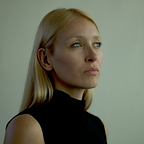Dis /Oriented Museums — Questioning the Definition of Museums.
I had the pleasure to share my ideas and visions about the current state of museums and their evolution during Aktionsraum Museum, a symposium organised by the Museum der Moderne Salzburg and the Salzburg Museum in Austria on 29/30 November 2019. The is an excerpt from what I presented.
The museum industry is now debating the definition of a museum for a few years, and even more today. ICOM released a new definition last year after leaving it untouched for ten years and is planning to publish a next one in September 2019. But outside of this official international definition, people are talking and debating, and media are publishing debates about the topics to try to make sense of it.
The first big question concerns the collection: does a museum has to have a collection? If yes, what kind of collection, can we speak of an intangible or digital collection, ephemeral or consumable? The last is the social value of museums, placing visitors not only within the strategy of museums but making them the very reason for their existence.
And between these two questions, we hear the industry ask whether a museum depends on the permanence of a place, its physicality and accessibility, the educational activities put in place for the public, the number of objects in the collections etc.
Here is a list of different museums, think about what is for you a museum and what is not: Musée du Louvre, Museum of Disgusting Food, VR Kremer Museum, Tate, Google Arts & Culture, Museum of Ice Cream, Colored Girls Museum, Vagina Museum, Victoria & Albert Museum, White Chapel Gallery, City of Science and Industry. Palais de Tokyo, Climate Change Museum.
Today, museums are imploding. We can’t deny that. In this fragmented society of mash-ups, migrations, reality distortions, we all have a diversity of identities and memories. The map of the world has been redrawn by all the movements and revolutions that we saw in the last decade. This overload of content and information made us multiple, and museums should be today the mirror of this diversity. Museums are now ready to change their shape depending on the society and the needs of local communities.
The identity crisis museums are facing today no surprise. This is just the consequences of significant shifts we saw in our society in the last decade. And, the more porous the museums become, the more museums responding to the major changes in our community we will see appear.
Globalisation made museums safe places — Globalization created worldwide movements from local actions. Museums could get an international dimension by responding to the news with their content and becoming a global or local referent for truth and trust.
Urbanisation made museums permeable to locals — Inspired by the cosmopolitism of its visitors, the museum is developing its purpose, identity and form by adapting to local and global developments in society but also by providing what locals need. Examples: Colored Girls Museum, Middlesbrough Modern Museum of Art, Museum of Street Culture, Museum of Homelessness, Museum of Free Derry, District Six Museum, Museum of Impact, Museum of Broken Windows, etc.
Humanisation made museums a life-experience — The rise of experience and immersion as a means of learning and discovery in museums are encouraging curators to create emotional, intellectual and virtual visitor journeys with strong storytelling. Examples: “Tear Room” at Tate, Cabinet of Virtual Reality at the National Natural History Museum of Paris, “Vincent Dreams” exhibition at the Van Gogh Museum, Museum of Ice Cream, Fun House Exhibition at the National Building Museum, British Museum of Food, Sweet Art Museum, Disgusting Food Museum,
Digitisation made museums public — Would you have ever imagined 20 years ago that your kids will try to find their double within the collection of the biggest museums? Well, the mass digitisation of museums created it and made them as public and open as possible (Google Arts & Culture Selfie)
Wellbeing made museums a medicine for our society — The ultra-virtualisation of social interactions pushes people to seek authenticity and reality, meaning and ethics. The three-year research project “Museums on Prescription” by the University College of London and recently the possibility for French-speaking doctors in Canada to prescribe a visit to the Montreal Museum of Fine Arts to their patients is a revolution! The benefits of museums for our health and Happiness is not a question anymore.
Neo-ecology made museums exhibit Nature — The rise of green awareness and the start of sustainable behaviours towards the planet gave to museums the space to take action. Examples: Newfields, a Place for Nature and the Arts (former Indianapolis Museum of Art), Biotopia, Climate Change Museum, Mount Fuji World Heritage Center, Afsluitdijk Wadden Center, Sound and Silence exhibition at the Communication Museum in Bern, Climate House in the Natural History Museum, etc.
And we can keep going like that with all the mega-trends that are changing now our present and future.
Today, I question the fact that we need a definition for museums.
I see museums becoming more and more social services every day. International or local, services like as education, food subsidies, health care, police, fire service and others can be understood and translated by each of us in different ways, it has no unique definition but is a fundamental need and a right.
We witness today the reappropriation of the word “museum” by individuals and institutions of all types, and this brings me deep joy. I am convinced that each of us already has his definition of a museum, created according to his culture, experiences and needs. It’s now up to us to define and shape the museum that we believe in.
